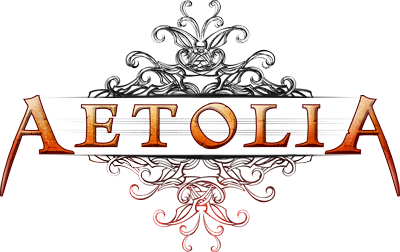9.6.4 Jewelcraft
Jewelry serves different functions to different cultures around the world. To some, it is the purest of luxuries. To others, jewelry serves ceremonial purposes, marks rites of passage, or acts as a badge of rank or office. Almost universally, however, those who sculpt works of jewelry are admired and valued for their skills.
To become a professional jewelsmith, you must be trained by the craft guild of a major city. Go to the craft guild office and BUY JEWELCRAFT PERMIT. The craft guild assesses a fee of 100 credits for the permit, which does not expire. Once a licensed jewelsmith, you will have basic ability in the Jewelcraft miniskill. The more you train in this skill, the higher quality your products will be.
To craft a piece of jewelry, simply purchase a jewelry mold (either from the craft guild shop or from a more experienced jewelsmith) and the components required to make the item as indicated by the mold. Then CRAFT <mold> to construct your jewelry.
Once you have attained Expert skill in Jewelcraft, you will gain the coveted ability to design items of your own. This process is a bit more involved:
1) Purchase a blank design using DESIGN REQUEST. This must be done at your local craft office*.
*If you have purchased the crafting gnome artifact, it may be done anywhere (AP INFO CRAFTGNOME).
2) At the jewelcraft office of your choice, select the design you want to copy - DESIGN <new design number> COPY <design template number>. In example, if you wanted to make an anklet, you would DESIGN 12345 COPY 3566, which will use the basic template for an anklet. HELP JEWELCRAFT REFERENCES can help you find a variety of reference tags you can use. You may also view the basic template at any appropriate shop using DESIGN <design number> while standing in said shop.
You can also make a copy based off a design you already have, rather than paying to use the design at the crafting office
3) Customize your sketch's appearance when held, when viewed in a room, and when examined closely:
DESIGN <#> APPEARANCE <description>
DESIGN <#> DROPPED <description>
DESIGN <#> EXAMINED <description>
DESIGN <#> ADD <qty> <components>
You may also choose to, if it is a worn item:
DESIGN <#> WORN 1P <description>
DESIGN <#> WORN 3P <description>
DESIGN <#> REMOVED 1P <description>
DESIGN <#> REMOVED 3P <description>
DESIGN <#> ATTIRE <description>
Entering DESIGN with no command will remind you of all design-related syntaxes.
When designing worn and removed 3p messages, you must use certain tags to establish where the wearer's name fits into the message.
$(name$) = Wearer's name
$(him$) = Him/her
$(his$) = His/her
$(he$) = He/she
If the tag occurs at the beginning of a sentence, you'll need to add a + between the first dollar sign and its parenthesis, as seen in the example below:
Example: $+(name$) dons a silver anklet, reaching down to adjust its fit around $(his$) ankle.
4) Give your design a last look over - check for spelling errors, grammatical mistakes, or missing additional components! HELP JEWELCRAFT APPROVAL GUIDELINES is a good thing to double-check, along with HELP DESIGN GUIDELINES and HELP IMPORTANT CRAFTING RULINGS.
5) Take your design to a craft guild office and DESIGN <#> SUBMIT. The craft guild will review your design for errors and approve or reject it accordingly. DO NOT REMOVE YOUR DESIGN FROM THE QUEUE TO FIX IT IF REJECTED: simply edit the design using the above commands while it remains in the queue. The approvers will be notified that you have made changes to it and be able to approve it.
6) When the design is approved, you will be notified by a message. Return to the craft guild office, and DESIGN <#> PAY FEE to pay the approval fee so you can begin crafting it.
Once you have attained Transcendent skill in jewelcrafting, you will have the ability to make up to ten of your jewelcraft designs permanent by doing DESIGN <#> PERMANENCE <ON|OFF>.
Making Jewelry Return
------------------------
LUSTER <jewelry> WITH RETURNING
You can add returning to it, causing the jewelry to return to your inventory if lost.
This will cost you 25 credits each. This has the same restrictions as adding an artifact power to the piece.
NOTE: When Luster is applied jewelry becomes permanent and can no longer be enchanted.
For more information: HELP JEWELCRAFT APPROVAL GUIDELINES, HELP JEWELCRAFT REFERENCES, HELP DESIGN GUIDELINES, HELP IMPORTANT CRAFTING RULINGS